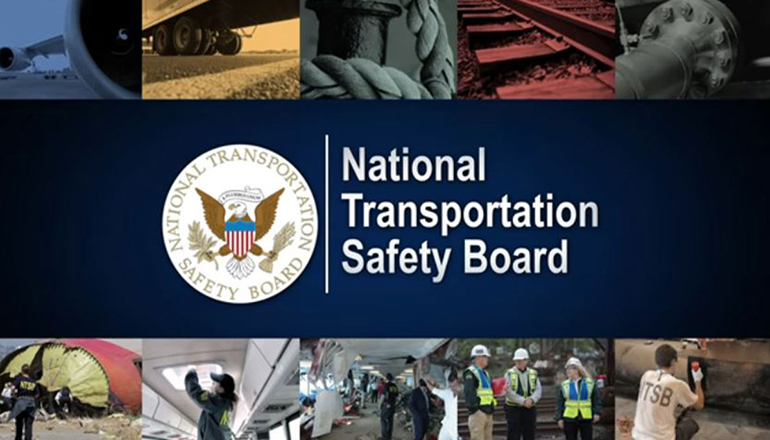A team from the National Transportation Safety Board was at the scene June 28th of June 27th’s fatal Amtrak train crash south of Mendon in which a train hit a truck at a railroad crossing.
The Highway Patrol reported the number of fatalities rose to four on June 28th. Three fatalities were train passengers, and one was the truck driver.
During a news conference on June 28th, NTSB Chairperson Jennifer Homendy reported the truck was owned and operated by MS Contracting LLC based in Brookfield and was transporting aggregate to an Army Corps of Engineers project north of the crossing. She explained the truck came into the path of the train, and the train hit the back of the truck. The train’s two locomotives, six coach cars, one cafe car, and one baggage car all derailed.
Amtrak officials previously announced about 150 people were transported from the scene to 10 area hospitals for treatment of injuries ranging from minor to serious. Amtrak officials said there were about 275 passengers and 12 crew members. The Southwest Chief Train 4 traveled east on the BNSF track from Los Angeles to Chicago when the crash happened.
Homendy reported the crossing near Mendon is passive grade, which means there is a stop sign and crossbucks. There are no arms, warning lights, or bells like there are at active crossings.
For several years, the NTSB has issued recommendations on closing crossings, consolidating crossings, separating grade crossings, and making crossings that are not separated or consolidated active. That would provide warnings to drivers who approach the crossings. Homendy said it would cost about $400,000 to make the crossing near Mendon active. Since the crossing is on a county road, she said the county, the state, and BNSF together would be responsible for installing active warning devices.
The NTSB has also recommended since 1998 technology in road vehicles that could alert drivers of the presence of a train at grade crossings.
Homendy said the NTSB is downloading information from the event recorder to determine when the locomotive engineer blew the horn and the speed of the train. She noted the train speed limit is 90 miles per hour in that area. The information will also include brake application and if it was full service or emergency brake.
The NTSB is also downloading information from two forward-facing cameras. Homendy said the NTSB would also want to look at the electronic control module on the truck as well as data from wayside and signal systems. It will also request information from Amtrak on the train’s last inspection.
Homendy noted she did not have concerns about a mechanical failure or mechanical problems with the train or problems with the track. NTSB’s concerns are focused on the grade crossing, the approach to the crossing, and survivability after an accident.
The NTSB had begun interviews of the crew as of June 28th. A transportation disaster assistance team was working with families and the Red Cross.
Homendy reported the NTSB would hold an organizational meeting on the morning of June 29th to determine the next steps.


